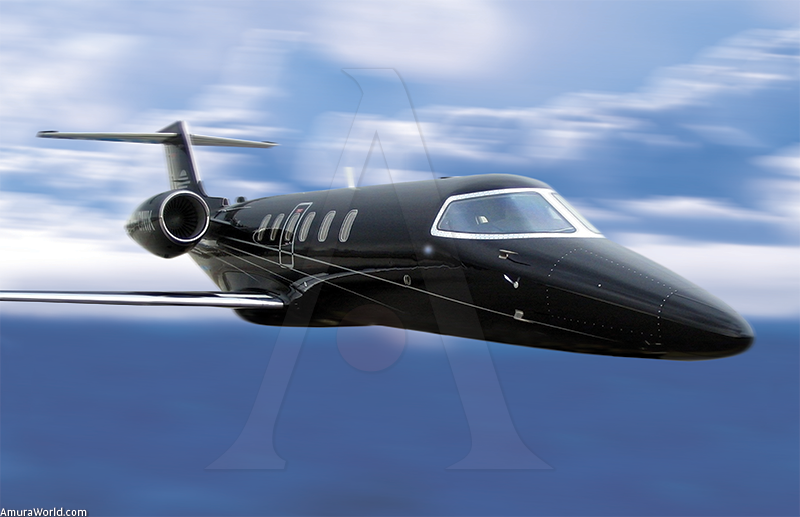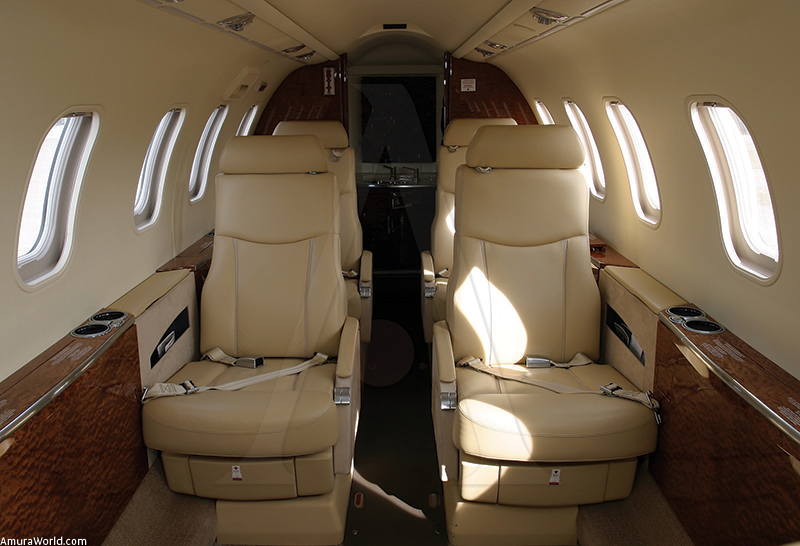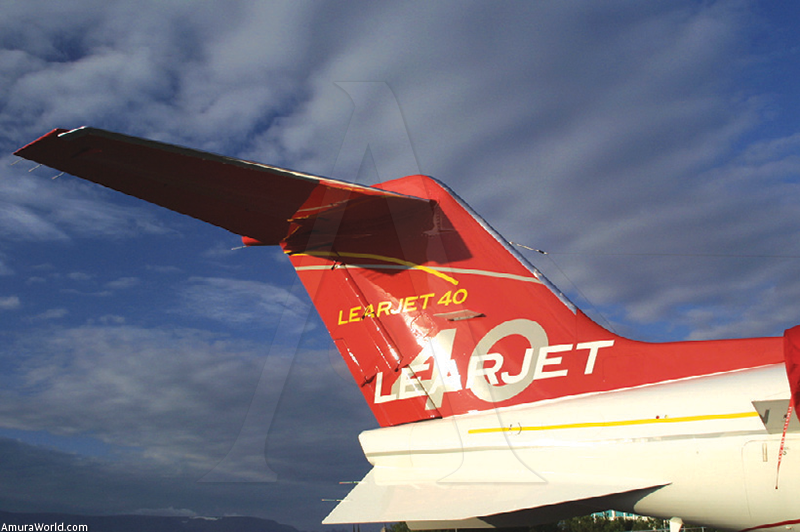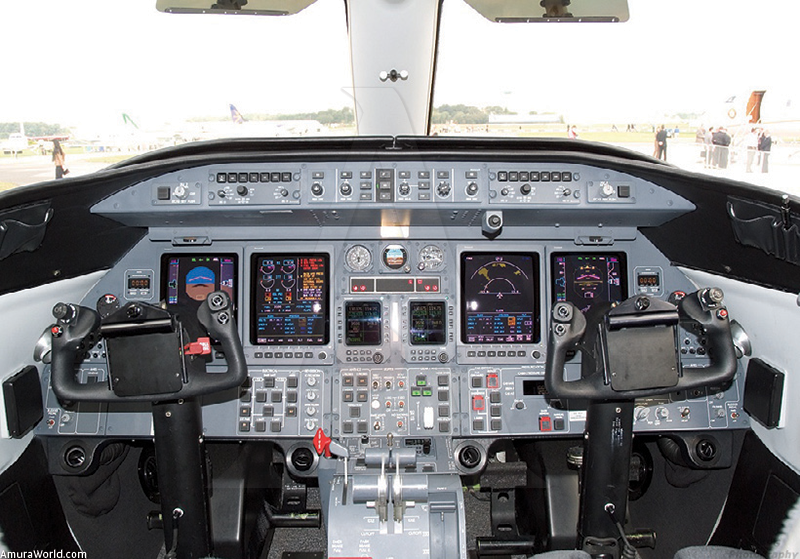When Bill Lear introduced the first Learjet in 1963, no one imagined that it would become an icon of the air and that it would revolutionize executive flights with its design, style, power and speed.
The years passed and, in 1990, Lear’s company was bought by Bombardier, a Canadian company that improved the business jets and developed the Learjet 40, making its name synonymous with exclusivity in the light plane segment, and a favorite of executives who consider it an extension of their office, even when flying from one country to another.
The Learjet 40 delivers the best value in its class. It combines excellent comfort, low direct operating costs, unequaled payload/range capabilities and legendary Learjet performance. Designed to satisfy the ever-changing needs of the light plane segment, it offers an unequaled level of comfort, tech- nology and sophistication and possesses more standard certifications than any other light plane.
Over time, Bombardier has developed 13 models —more than any other company— and given each one the latest in cutting edge technology. This model is 20 percent larger than any other light plane, which translates into more comfort for passengers, who are free to move about as they please.
The Learjet 40 cabin is 363 ft3 (10.28 m3) and has been intelligently designed with comfortable leather seats and two 51-centimeter (20 inch) executive tables, all hand assembled.
For entertainment, the cabin can be equipped with DVD, CD and MP3 players in addition to equipment for receiving TV programs. The pilot’s cockpit has been esthetically designed to form an integral part of the plane’s cabin. Seven passengers and two pilots can comfortably travel at speeds up to 0.81 Mach (534 mph, 859 km/h). The Learjet 40, just as the 50 and the 45 XR models, has been certified to fly at 51,000 ft (15,000 m), far from air traffic and turbulent weather, resulting in a comfortable flight with less bumpiness. In addition, propelled by a pair of TFE 731-20-AR- 1B Honeywell rear engines, it is capable of climbing directly to 43,000 ft (13,000 m) in less than 23 minutes.
Because of its excellent capabilities on short fields, the Learjet 40 can land and take off in small airfields, which it can do in any part of the country.
Pilots are offered the latest in technology for comfortable flying, especially at high altitudes and approach, as if it were a larger jet. The huge elec- tronically heated windshield provides 220 degrees of visibility. It features Honeywell Primus 1000 avionics and include direction systems for more precise flight administration, an EFIS (Electronic Flight Instruments System) that utilizes four big screens (8x7 inches/20 x 17 centimeters) and an E3CAS (Engine Instrumentation and Crew Alerting System) that are unique in its class.
Propelled by powerful engines, it can take its passengers from Mexico City to Los Angeles, Atlantic City, Chicago and southern Canada. This is definitely a jet capable of transporting executives in style.
| High-speed cruise |
| 0.81 Mach (859 km/h) |
| Maximum range |
| 1,803 NM (3,339 km), IFR |
| Ireserves, ISA with four |
| passengers and two crew members. |
| Maximum altitude |
| 51,000 ft (15,545 meters) |
| Passengers |
| Up to 7 passengers and |
| 2 crew members. |
| Engines |
| 2, Honeywell TFE 731-20-AR |
| Thrust |
| 3,500 lb (15.56 kN) |
| Avionics |
| Honeywell Primus 1000 fourtubes |
| EFIS, Engine |
| Instrument/Crew Advisory |
| System (EICAS), Honeywell |
| Primus 660 weather radar, Dual |
| Primus II nav/comm systems |
| Traffic Collision Avoidance |
| System (TCAS 2000), Enhanced |
| Ground Proximity Warning |
| System (EGPWS) with |
| Windshear Alert, Emergency |
| Locator Transmitter (ELT). |
| DIMENSIONS |
| External |
| Length |
| 55.5 ft |
| Wingspan |
| 47.78 ft |
| Wing area |
| 311.6 ft2 |
| Height |
| 14.13 ft |
| Internal |
| Length |
| 17.7 ft |
| Maximum width |
| 5.12 ft |
| Cabin width |
| 3.1 ft |
| Floor area |
| 55.7 ft2 |
| Total volume |
| 36.3 ft2 |
| Weights |
| Maximum ramp weight |
| 20,600 lb |
| Maximum takeoff weight |
| 20,350 lb |
| Maximum landing weight |
| 19,200 lb |
| THIS IS THE LEARJET 40 |
| • 1965: Flies from Paris to Los Angeles in ten hours. |
| • 1976: Golfer Arnold Palmer flies around the world in 48 hours and 48 minutes aboard a Learjet 40. |
| • 1979: Becomes the first jet with seried winglets. |
| • 1979: Receives FAA certification. |
| • 1990: Bombardier acquires Learjet. |
| • 1999: Learjet number 2,000 is sold. |
Text: Laura Velázquez ± Photo: Bombardier




